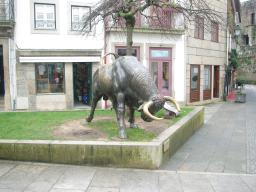

In the heart of the Valley of Lima, the oldest village in Portugal hides deep roots and ancestral legends. Was the Queen D. Teresa who, in far-off date of March 4, 1125, granted charter letter to the village, referring to it as Ponte de Lima. Years later, already in the fourteenth century, Pedro I, given the geo-strategic position of Ponte de Lima, told Wall it, so the end result was that of a medieval village surrounded by walls and nine towers, of which remaining two, several traces of the remaining and the whole defensive structure then, is making access to the village through six doors.
The bridge, which gave name to this noble land, always acquired an importance of great significance throughout the Alto Minho, serving as the only safe passage of the Lima River, in all its extension, until the end of the Middle Ages. The early was built by the Romans, which remains a significant section on the right bank of the Lima, the medieval being a remarkable architectural landmark, having very few examples that compare him in pride, beauty and balance of the whole. Obligatory reference in scripts, guides and maps, many of them old, describing the passage through it of thousands of pilgrims who demanded to Santiago de Compostela and still today transposing for the same purpose.
From the eighteenth century urban expansion comes and with it the beginning of the destruction of the wall that embraced the village. Begins to thrive throughout the Ponte de Lima municipality, the opulence of the mansions that the nobility of the time undertook to spread. Over time, Ponte de Lima was thus adding to its natural beauty magnificent Gothic facades, Baroque, Neoclassical and nineteenth century, significantly increasing the historical, cultural and architectural value of this unique corner in the whole of Portugal.
Located north of Porto, the city of Barcelos is known for its handmade ceramics, especially the Galo de Barcelos – a colorful rooster considered a national icon and often used as a symbol of Portugal. The walled medieval town stretches on a hill above the Cavado River and its charming streets are lined with baroque houses.
The fair in the field of the Republic, which takes place every Thursday, attracts buyers and visitors from throughout the region. The Fair of Barcelos is an essentially rural event with fruit stalls and seasonal vegetables, homemade cheeses and beautiful ceramic pieces as well as all kinds of crafts, in which the protagonist is of course the rooster of Barcelos.
Among other local attractions include the Church of Our Lady of the Rosary, the Barcelos Handicraft Centre and the Palace of the Dukes of Bragança ruins dating from the fifteenth century, which were translated in an archaeological museum outdoors. This site also displays a cruise that describes the history of Barcelos Rooster.